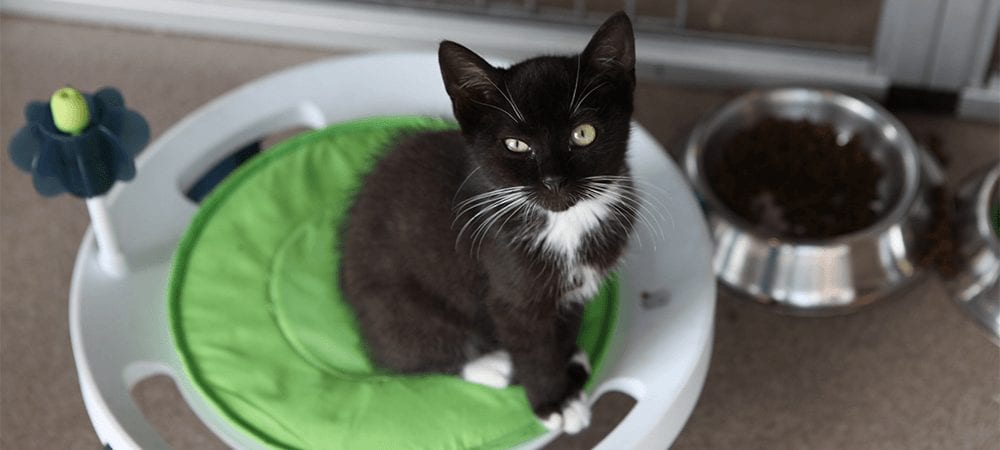Potty Training Kittens

So, you’ve brought home a new feline addition to the family and need some pointers on where to get started potty training kittens. We have good news for you! Potty training kittens is much easier than training a new puppy to use the bathroom outside. Often times, your new kitten will already know what to do in the litter box thanks to watching good ol’ mama cat do her thing. They are also helped by their strong natural instincts that drive them to want to bury the deed. Get started on how to house train a kitten by having your supplies all ready the moment your new buddy enters your home.
Get the Right Supplies
Litter Boxes
Go ahead and double up on your litter boxes when initially potty training kittens. If you have a larger home with two levels, keep one on each level and place them in semi-concealed locations that are easy to get to, but offer a little bit of privacy. The privacy will help your kitten feel more safe while they go.
Litter
There are so many types of cat litter available from clumping, to natural clay, to recycled paper products, and more. Some cats could care less as to what type of litter you use, while others are extremely picky and won’t use it if they don’t like the smell or consistency. To start off potty training kittens, use a basic unscented non-clumping cat litter. (Kittens sometimes eat litter, and the clumping kind can be extremely dangerous to their digestive systems.) You can experiment with other kinds of litter when your cat is older and fully trained.
Treats
Just like with dogs, you can use positive reinforcement to help train your kitten to use the litter box. Every time after they successfully use the litter box, reward them with a treat!
How to House Train a Kitten
When you bring your new kitten into your home, you should already have their litter boxes set up and ready for use. Place your kitten in the box, one by one, and allow it to sniff around and get its own scent in the area. Don’t move the boxes around the house, as this could confuse your potty training kitten.
If you notice your kitten trying to squat, immediately place them in the litter box. You should also place them in the box after each meal and when they wake up from naps. Remember to reward your kitty with a treat when they use the litter box.
Litter Box Care
How to house train a kitten also involves litter box maintenance. It is important to regularly scoop and clean your cat’s litter box. A full, stinky box can discourage cats from using it, and may encourage them to use your carpet instead. The chemical composition of cat urine makes it one of the most difficult smells to eradicate once it has soaked into your carpet and woodwork. And, once a cat has started using a spot in your house outside of the box, they will return to use the same spot until the smell has been cleaned away. Use special pet enzyme cleaners to break down and get rid of the cat pee smell.
Scoop the litter box daily to remove the clumps. Once the litter has stopped controlling odor, about once a week or so, you should dump away the old litter. Then, clean the box with mild soap and water, and add fresh litter.
Helpful Hint: Some cats have terrible aim and can end up peeing just outside of the litter box, while they think it is going in the actual box. Use a plastic or rubber mat underneath your cat’s litter box to catch any overflow and spilled litter.
Most kittens will take to using the litter box like ducks take to water. As we stated earlier, it’s a part of their natural instincts to use loose soil to bury the evidence. While accidents may occur, remember not to yell at your kitten. Use treats and positive reinforcement to potty train your kitten into adulthood.


